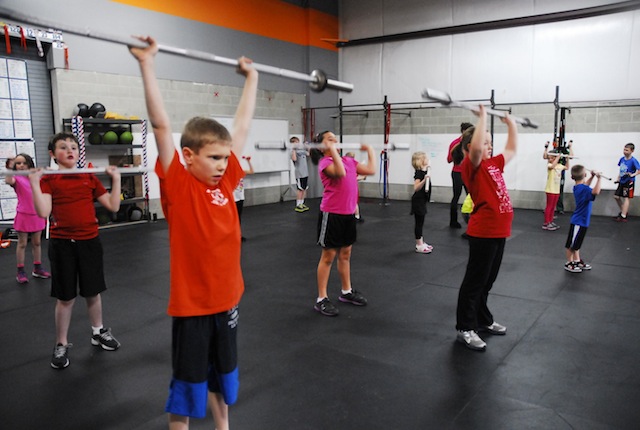
Sensory activities play a pivotal role in developing proprioception, which is the body’s ability to sense motion, action, and location. Proprioception, often referred to as the ‘sixth sense’, encompasses the unconscious awareness of the body’s position and movement in space. From infancy, children engage in a variety of movements and interactions with their surroundings that are crucial for their proprioceptive development. Sensory play that stimulates touch, pressure, and body movements enhances a child’s ability to process and respond to sensory information, which is vital for learning new skills and coordinating their actions effectively.
Proprioceptive development is a foundational element for children’s overall growth, affecting their motor skills, language development, and social interactions. Including proprioceptive activities for children in their sensory plays can have a lasting impact on their motor control and cognitive functions. Activities such as pushing, pulling, lifting, and carrying provide essential sensory feedback to the brain, forming the building blocks for complex skills like writing, dressing, and participating in sports. Please be aware that this information serves solely for informational purposes; for personalized guidance, it’s advisable to seek assistance from a qualified medical professional.
Key Takeaways
- Sensory activities support essential proprioceptive development in children.
- Proprioception enhances motor skills and coordination through feedback from muscular and joint movements.
- Sensory play is crucial for cognitive growth and social skill development.
Understanding Proprioception and Sensory Systems
Proprioception, fundamental to child development, facilitates body awareness and motor skills by integrating sensory inputs. This section explores proprioception’s role, the complexity of sensory systems, and how sensory processing is pivotal for learning.
The Role of Proprioception in Development
Proprioception is often referred to as the “sixth sense,” critical for a child’s development of body awareness and motor skills. It provides the ability to sense movement, action, and location without visual cues, thereby informing the brain about the position of limbs in space. Children rely on proprioceptive input to learn how to modulate strength, such as applying appropriate pressure when holding a pencil.
Components of Sensory Systems
Sensory systems comprise seven senses: sight, sound, smell, hearing, vision, tactile (touch), vestibular (balance), and gustatory (taste), along with the less-known proprioceptive and olfactory (sense of smell) systems. These systems work together through sensory integration to process external stimuli and respond appropriately to the environment.
- Sight (Vision): Allows children to understand and navigate the world visually.
- Sound (Hearing): Essential for language development and responding to auditory cues.
- Smell (Olfactory): Contributes to taste and detecting environmental cues.
- Tactile: Facilitates learning through touch and texture differentiation.
- Vestibular: Helps with balance and spatial orientation.
- Gustatory: Affected by both taste buds and the olfactory sense.
- Proprioceptive: Regulates body position and movement without visual input.
Impact of Sensory Processing on Learning
Sensory processing is the method by which the brain organizes and interprets sensory information to respond adequately to the environment. Effective sensory processing is crucial for cognitive development, including areas like language comprehension, attention, and problem-solving. Sensory Processing Disorder (SPD), however, can hamper these abilities, making it challenging for children to achieve developmental milestones.
Sensory activities designed to enhance proprioceptive feedback can significantly aid in the development of children, particularly those with SPD, by reinforcing the connections between sensory input and motor responses. These activities can range from jumping to playing with textured objects and are beneficial in honing a child’s perception and cognitive growth.
Proprioceptive Development Through Sensory Play
Proprioceptive development in children is essential for honing motor skills, balance, and spatial awareness. Sensory play provides varied experiences that can significantly bolster the proprioceptive system.
Activities for Enhancing Proprioceptive Input
Heavy work activities, which involve pushing, pulling, and carrying objects, are highly beneficial for enhancing proprioceptive input. Engaging children in exercises that exert pressure on the joints and muscles can strengthen the proprioceptive system. For example, obstacle courses that require children to crawl under or climb over objects can improve motor development as well as balance and coordination.
- Suggested Activities:
- Jumping on a trampoline
- Playing tug-of-war
- Carrying books or groceries
- Climbing playground equipment
Incorporating Various Sensory Inputs
A balanced approach to sensory development also includes integrating other sensory systems like the vestibular system, which is responsible for balance and directional orientation. Sensory activities that combine touch, movement, and proprioceptive exercises can create an enriched learning environment. Utilizing equipment such as swings or balance beams can stimulate both the proprioceptive and vestibular systems simultaneously. Therapists often recommend a variety of sensory play options tailored to each child, as seen on resources such as Cleveland Clinic Health Essentials.
- Types of Sensory Inputs:
- Vestibular: Activities involving head movement and changes in direction
- Tactile: Play involving various textures and materials
- Proprioceptive: Exercises that involve heavy work or deep pressure
Monitoring Progress and Adapting Interventions
Occupational therapists play a critical role in the assessment of sensory development, which often includes a child’s proprioceptive abilities. Progress is monitored through tailored exercises and games that adapt to the child’s developing sensory systems. The concept of neuroplasticity is applied here, proposing that the brain’s organization can change and reorganize itself through diverse sensory experiences. Regular re-evaluation ensures that interventions remain effective and responsive to a child’s needs.
- Monitoring Methods:
- Observation of a child’s performance in various activities
- Parental feedback on behavior and abilities at home
- Professional reassessment at regular intervals
Conclusion
Engaging children in sensory activities is instrumental for the development of their proprioceptive system. These activities enhance body awareness, and improve the coordination of movements, allowing children to interact more effectively with their environment. Through the stimulation of muscle receptors and joints, these activities contribute to a child’s ability to navigate and respond to physical challenges with greater precision. Implementing diverse and consistent sensory play is seen as a core component in fostering healthy proprioceptive development in children.


















Follow Us